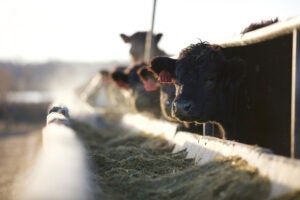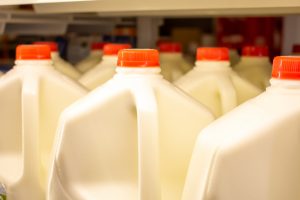A new, quarterly report from CoBank illustrates a gravity-defying U.S. economy despite inflation, borrowing costs, and other headwinds. Meanwhile, the labor market has remained relatively tight but has improved significantly as females and non-native workers have stormed back into the workforce.
The tight farm labor market continues to be incredibly challenging for U.S. specialty crop producers. The Federal Reserve Bank of San Francisco reported that weekly median wages for farm workers swelled to a record high of $915 in April, a 24 percent increase from the previous year.
In June, the House Agriculture Committee created a bipartisan working group to evaluate the H-2A program and find solutions for farmers’ labor supply challenges.
The labor force participation rate for women between the ages of 25 and 54 now stands at an all-time high, up more than 4 percentage points from the low in April 2020. Meanwhile, foreign-born employment has increased at double the rate of native-born employment since April 2020.
The successes of these two groups have been critical so far in the economic recovery. But looking forward, it raises the question of how many more workers can be coaxed in off the sidelines. Ultimately, the U.S. labor force challenges are far from over.
While rebounds in the labor force are a bright spot for businesses, according to CoBank, they’ll be key to economic recovery with risks to the economy looming and ever-increasing in number and size.
»Related: U.S. bill targets ‘racial exclusions’ of OT pay for farmworkers
Where do ag commodities stand?
Grains: With the corn and soybean growing season in full swing, drought across the Central U.S. is driving heightened seasonal market volatility. Markets are balancing the quickly deteriorating crop conditions against the potential for El Nino to bring wetter conditions later in the growing season.
Wheat harvest is advancing northward in the U.S., revealing high crop quality variability. USDA expects the U.S. hard red winter wheat crop to be the smallest since 1957 on substantially higher abandonments and lower yields.
Biofuels: The ethanol complex delivered second-quarter solid results with steady production and above-average profitability. Operating margins averaged 45 cents per gallon, nearly double the long-term average. While the finalized blending requirements under the Renewable Fuel Standard were somewhat disappointing for ethanol, they were incrementally positive for biomass-based diesel. The new rules call for 2.82 billion gallons of biodiesel and renewable diesel in 2023 and 3.35 billion gallons in 2025.

Animal protein: As the summer grilling season kicked off, beef demand remained incredibly resilient despite elevated consumer prices. Retail beef prices averaged $7.50 per pound in May, a record high for the period and an increase of 2 percent year-over-year. Robust demand combined with tighter cattle supplies spurred market momentum for cattle. Fed cattle values reached record levels, above $180 per cwt. And feeder cattle shot above $240 per cwt. While consumers have yet to balk at higher beef prices, things could quickly change when seasonal support wanes.
Excess hog supply and weak pork demand jeopardized hog prices this spring. After a steady start to the year, the CME lean hog index tumbled about $10 per cwt., to $72 from mid-March to late April. However, more favorable market conditions across the animal protein segment drove lean hog values up 30 percent through May and June. While still down about $15 year-over-year, the pork cutout landed in the upper $90s, gaining about $20 per cwt. through the quarter.
Domestic chicken consumption was up about 4 percent year-over-year through June 1, which has helped chip away at elevated cold storage holdings. Wholesale broiler meat prices have rebounded mainly to pre-pandemic levels, following significant declines in late 2022 and early 2023. Feed costs have come down about 10 percent from last year but remain well above their historical averages. For broiler integrators, increased feed costs and higher operational expenses have crimped profitability.
»Related: U.S. cattle inventory falls to the lowest level in decades

Dairy: U.S. milk producers continue to struggle in the current price environment. The national all-in mailbox milk price has dropped below the $20 per cwt. mark after averaging $25.34 per cwt. in 2022. While several factors are to blame for this year’s milk price decline, the sharp drop in American/cheddar-style cheese prices is the most significant.
Prices for the category have dropped by one-third since the beginning of the year. Milk and feed futures suggest producer profitability should improve considerably by October, when Class III milk prices are anticipated to increase by about $3 per cwt.
Cotton: U.S. cotton production is rebounding from last year’s crop that was devastated by extreme drought across the southwest. Recent rainfall in top-producing Texas is expected to reduce abandonment following three years of severe drought.
The U.S. cotton crop is now estimated at 16.5 million bales, up 14 percent from last year. Price inflation for clothing and apparel in the U.S. continues to ease with the moderation of cotton prices, which may work to draw in new consumer demand.
»Related: Farmer sentiment back up, with future outlook on the rise


